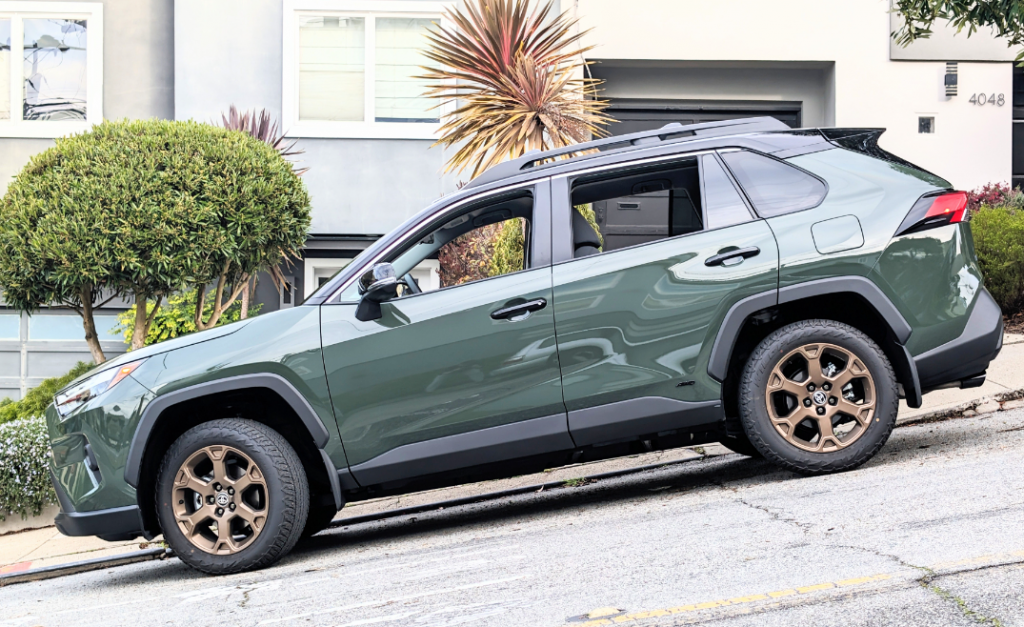
By Philip Ruth–
“Doing your own research” can lead to a place that isn’t necessarily where you want to go. We saw this during the COVID-19 pandemic, when normally discerning folks were swayed by theories and opinions that ran counter to the medical realities.
This came to mind as I evaluated two similar but very different compact SUVs, the $56,430 Lexus NX 350h Luxury and $36,545 Toyota RAV4 Hybrid Woodland Edition. They are both made by Toyota. They’re based on the same platform and use the same powertrain, albeit with different tuning between them. Online forum users seem to have their minds made up: the Lexus is the obvious choice, based on the specs and perceived driving experiences.
After driving them both in San Francisco, I’d say, “Whoa, Nellie!” Let me explain.
First of all, it’s a given that our fair city is not the typical driving environment, as there are few places that will present you with San Francisco’s dizzying inclines and declines.
Second, ours is a place of diverse modes of transport, from double-length buses to electric scooters. Being on your toes and ready to react is the key to keeping your stress low.
From looks alone, the sporty, coupe-like lines of the Lexus seem to fit the bill. Its sweeps and curves elevate it above the crossover rabble, and its tailor-made cockpit bolsters the let’s-blast-off vibe.
In comparison, the tested RAV4 Hybrid Woodland Edition had thick fender flares, “Army Green” paint, and images of mountains etched into its grippy floor mats. It appears the Toyota is prepped for a deliberate, wheel-by-wheel rock climb.
A peek at the numbers tells you that the Lexus draws 240 horses from its 2.5-liter hybrid engine, while the very similar setup in the Toyota claims only 219. Advantage Lexus, right?

Yes, except the Lexus weighs about 250 pounds more than its platform-mate. And, its torque rating—the twisting force that gets the wheels rolling from a stop and up a steep hill—just about matches the lighter RAV4 Hybrid’s. So, while its horsepower puts the Lexus out front, it’s actually the Toyota that feels more eager to pounce.
Getting going means you’ve soon gotta stop, and the Lexus nails the spreadsheet with 13-inch brake rotors all around, while the Toyota’s rotors are down one inch up front and two inches in back. It is time to log in and declare the Lexus the winner, one would think.
But rotor sizes and real-world responses are very different things, and the Toyota inspires more confidence in the urban flow. Hybrids employ a regenerative braking system to charge the main battery, and the Lexus’ pedal press felt goopy, where at first it was slack to react and then felt heavy at the end. The Toyota settled its slowdowns with a more natural linearity.

Otherwise, these two accurately reflected their brand missions. The Lexus impressed with its supple “Rioja Red” synthetic-leather (“Nuluxe”) upholstery, while the RAV4 was rigorously functional.
But overall, they were a reminder to align one’s online research with the actual realities.
Philip Ruth is a Castro-based automotive photojournalist and consultant with an automotive staging service.
Auto
Published on January 25, 2024
Recent Comments